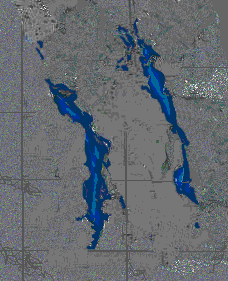This diagram shows the Americas being separated from the Europe and Africa as the seafloor spreads. Continents are grey in color. Youngest seafloor is red and as seafloor gets older it becomes yellow, green and then blue.
Click on image for full size
NOAA/NESDIS/National Geophysical Data Center, Boulder, CO.
Seafloor Spreading
This diagram provides evidence of seafloor spreading by showing the ages of ocean floor in the Atlantic and eastern Pacific Oceans. The red colors are the youngest parts of the seafloor, where fresh new crust is formed as lava seeps up from the deep interior of the Earth at spreading ridges. As new crust forms at these spreading ridges, older crust, colored green in the diagram, moves away from the ridge. The blue portions are the oldest regions of the seafloor. They are either next to continents, which also contain very old rocks, or are near areas on Earth where subduction is taking place.
The diagram shows the American continents being separated from the Eurasian and African continents. This is a very fast model of what has happened to the Earth’s plates over the past 250 million years.
You might also be interested in:
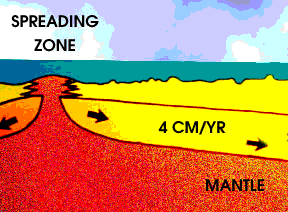
As the Earth cools, hot material from the deep interior rises to the surface. Hot material is depicted in red in this drawing, under an ocean shown in blue green. The hotter material elevates the nearby
...more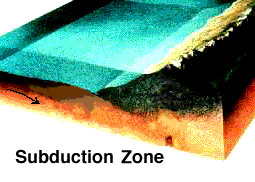
When two sections of the Earth's crust collide, one slab of crust can be forced back down into the deeper regions of the Earth, as shown in this diagram. This process is called subduction. The slab that
...more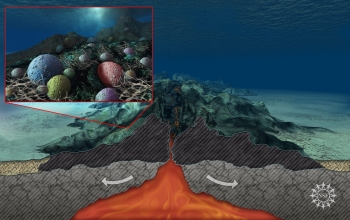
Has anyone ever told you that you shouldn’t eat things that you find on the floor? Well, the rules are different for bacteria. Scientists have found tons of bacteria at the bottom of the ocean that appear
...more
Plates at our planet’s surface move because of the intense heat in the Earth’s core that causes molten rock in the mantle layer to move. It moves in a pattern called a convection cell that forms when
...more
Many kinds of surface features are clues that our lithosphere is sliding. Two types of features can form when plates move apart. At mid ocean ridges, the bottom of the sea splits apart and new crust is
...more
The main force that shapes our planet's surface over long amounts of time is the movement of Earth's outer layer by the process of plate tectonics. This picture shows how the rigid outer layer of the Earth,
...more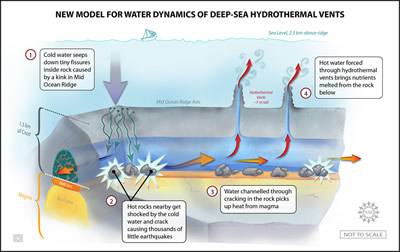
The Earth has a large system of ridges along the ocean floor that play a big part in the geology of the planet. A team of seismologists (geologists who study earthquakes) has been studying a place called
...more


